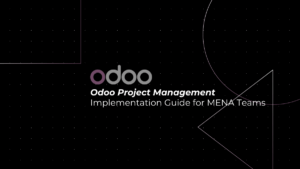
In the realm of digital transformation, where the pace of change is relentless and technology evolution is rapid, the role of IT governance has become more crucial than ever. Traditional governance models, built on static rules and manual processes, are increasingly inadequate in this dynamic environment. This is precisely where Artificial Intelligence (AI) emerges as a game-changer, offering innovative solutions to revamp IT governance and catapult organizations into a new era of efficiency and compliance.
Table of Contents
ToggleUnderstanding AI in the Context of IT Governance
Before delving into AI’s transformative impact, it’s essential to understand what AI is and how it fits into the IT governance framework. AI refers to the simulation of human intelligence in machines programmed to think and learn like humans.

In IT governance, AI can be leveraged to automate decision-making processes, enhance data analysis, and provide insights that humans might overlook. This integration of AI transforms IT governance from a reactive, rule-based structure to a proactive, intelligence-driven framework.
AI’s Role in Digital Transformation
Digital transformation reshapes industries, redefining how businesses operate and deliver value to customers. In this landscape, AI stands out as a pivotal element, especially in compliance and risk management. By utilizing AI, organizations can effectively navigate the complex regulatory environment, ensuring compliance with various laws and standards.
Additionally, AI significantly enhances risk management by identifying potential risks before they escalate, thereby safeguarding the organization against unforeseen threats.
Enhancing Compliance with AI
Compliance is a major concern for businesses, given the ever-increasing complexity and volume of regulations. AI revolutionizes this aspect by automating the monitoring and reporting processes. AI algorithms can continuously scan the regulatory environment for changes, ensuring that the organization’s practices are always in line with the latest requirements. This proactive approach not only saves time and resources but also minimizes the risk of non-compliance, leading to powerful and reputational damage.
Benefits of AI in Compliance
AI brings a host of benefits to the compliance aspect of IT governance:
- Automated Regulatory Monitoring: AI tools can continuously scan and interpret regulatory changes, ensuring that the organization remains compliant with the latest standards.
- Enhanced Accuracy: By reducing human error, AI improves the accuracy of compliance processes, leading to more reliable outcomes.
- Efficient Data Management: AI can handle vast amounts of data, making it easier to manage and analyze compliance-related information.
- Predictive Analysis: AI can anticipate potential compliance issues before they arise, enabling proactive measures.
- Cost Reduction: Automating compliance tasks with AI saves significant time and resources, leading to cost savings.
Streamlining Risk Management through AI
Risk management in the digital era is a daunting task, with new threats emerging constantly. AI comes to the rescue by offering sophisticated tools for risk assessment and mitigation. By analyzing vast amounts of data, AI can predict potential vulnerabilities and suggest preemptive actions. This predictive capability allows organizations to stay one step ahead of risks, ensuring the stability and security of their operations.
In risk management, AI offers transformative capabilities:
- Risk Identification and Assessment: AI algorithms can analyze patterns and trends to identify potential risks, even those not immediately apparent to human analysts.
- Predictive Risk Analytics: AI can forecast future risks based on historical data, helping organizations prepare and mitigate potential threats.
- Real-time Monitoring and Response: AI systems can monitor operational activities in real-time, quickly identifying and responding to emerging risks.
- Customized Risk Management Solutions: AI can tailor risk management strategies to the specific needs and profile of an organization.
Implementing AI in IT Governance
Implementing AI in IT governance is a strategic process that requires careful planning and execution. The first step is to clearly understand the organization’s objectives and how AI can help achieve them. This involves assessing the current IT governance structure and identifying areas where AI can bring the most value. The next step is to select the right AI tools and technologies that align with the organization’s needs and capabilities.
Advantages of Implementing AI in IT governance
Implementing AI in IT governance offers a multitude of advantages that can significantly enhance the efficiency, effectiveness, and overall strategic posture of an organization. Here are some key advantages:
- Efficiency and Automation:
- AI automates tasks, saving time and reducing errors.
- Streamlines operations, allowing a focus on strategic initiatives.
- Proactive Risk Management:
- Predictive analytics and machine learning identify and mitigate potential risks.
- Enables a proactive stance in risk management.
- Streamlined Compliance:
- AI monitors regulatory updates for up-to-date compliance.
- Minimizes non-compliance risks with changing regulations.
- Enhanced Security:
- AI-powered systems efficiently respond to cybersecurity threats.
- Safeguards organizational data and infrastructure effectively.
- Data-Driven Decision-Making:
- AI processes large data volumes for deep insights.
- Essential for informed, strategic decision-making
Practical Implementation Tips
For successful implementation of AI in IT governance, consider the following tips:
- Start with a Clear Strategy: Define what you want to achieve with AI and how it aligns with your overall IT governance goals.
- Focus on Staff Training: Invest in training your staff to handle AI tools and understand their implications in governance.
- Pilot Projects: Start with small-scale pilot projects to test and learn before full-scale implementation.
- Choose the Right Partners: Work with reputable AI solution providers who understand the nuances of IT governance.
- Continuous Monitoring and Adaptation: Regularly monitor the performance of AI tools and be ready to adapt to changing needs and technologies.
Selecting the Right AI Tools and Technologies
The market is flooded with a plethora of AI tools and technologies, each offering unique features and capabilities. Choosing the right ones is critical for the success of AI implementation in IT governance. Key factors to consider include the tool’s compatibility with existing systems, ease of use, scalability, and the level of support offered by the vendor. It’s also essential to consider the tool’s ability to comply with relevant data privacy and security regulations.
AI Tools for IT Governance
Several AI tools and technologies are pivotal in IT governance:
- Automated Compliance Software: Tools like Regtech (regulatory technology) automate compliance tasks and keep track of regulatory changes.
- AI-Powered Security Systems: These systems enhance cybersecurity and data protection, crucial aspects of IT governance.
- Predictive Analytics Tools: These tools use AI to forecast future trends and potential risks in IT operations.
- Machine Learning Algorithms: They help in pattern recognition and decision-making, improving the overall governance process.
Popular AI Tools Used in the MENA Region for IT Governance
In the MENA (Middle East and North Africa) region, organizations utilize a variety of tools for IT governance, risk management, and compliance. The adoption of specific tools often depends on the nature of the business, the regulatory environment, and the technological maturity of the organization. However, some tools are widely recognized and used across the region:
- Trend Micro Security Solutions: Known for its advanced threat protection and data security solutions, Trend Micro is used by organizations in MENA to protect against a wide range of cyber threats.
- Microsoft Azure: Given its extensive cloud services and solutions, Azure is popular in MENA for cloud computing, data storage, and analytics. It also offers robust security features, which are crucial for IT governance.
- IBM Security Solutions: IBM’s range of security products, including its advanced analytics and AI-driven tools like IBM Watson, is used for cybersecurity and risk management.
Challenges and Considerations
Implementing AI in IT governance is not without challenges:
- Data Privacy and Security: Ensuring the ethical use of data and protecting against breaches is critical.
- Integration with Existing Systems: Seamlessly integrating AI tools with current IT infrastructures can be complex.
- Skill Gaps: There’s a need for skilled professionals who can manage and interpret AI-driven systems.
- Reliance on Quality Data: AI systems require high-quality, unbiased data to function effectively.
- Regulatory Compliance: Navigating the regulatory landscape regarding the use of AI can be challenging.
The Future of AI in IT Governance
As we look ahead, the role of AI in IT governance is poised to grow even more significant. We can expect to see AI technologies becoming more advanced, with enhanced capabilities in predictive analytics and decision-making. These advancements will further streamline governance processes, making them more efficient and effective.
Preparing for the Future
To stay ahead in this evolving landscape, organizations must be proactive in adapting to the changes brought by AI. This involves not only investing in the right technologies but also fostering a culture that embraces innovation and change. Continuous learning and skill development will be key, as employees need to be equipped with the knowledge and tools to leverage AI effectively.
AI-infused IT governance is not just a fleeting trend; it’s a strategic imperative in the age of digital transformation. By harnessing the power of AI, organizations can transform their compliance and risk management practices, achieving unprecedented levels of efficiency and effectiveness. As we move forward, AI will undoubtedly continue to reshape the landscape of IT governance, opening up new possibilities and opportunities for businesses worldwide.




